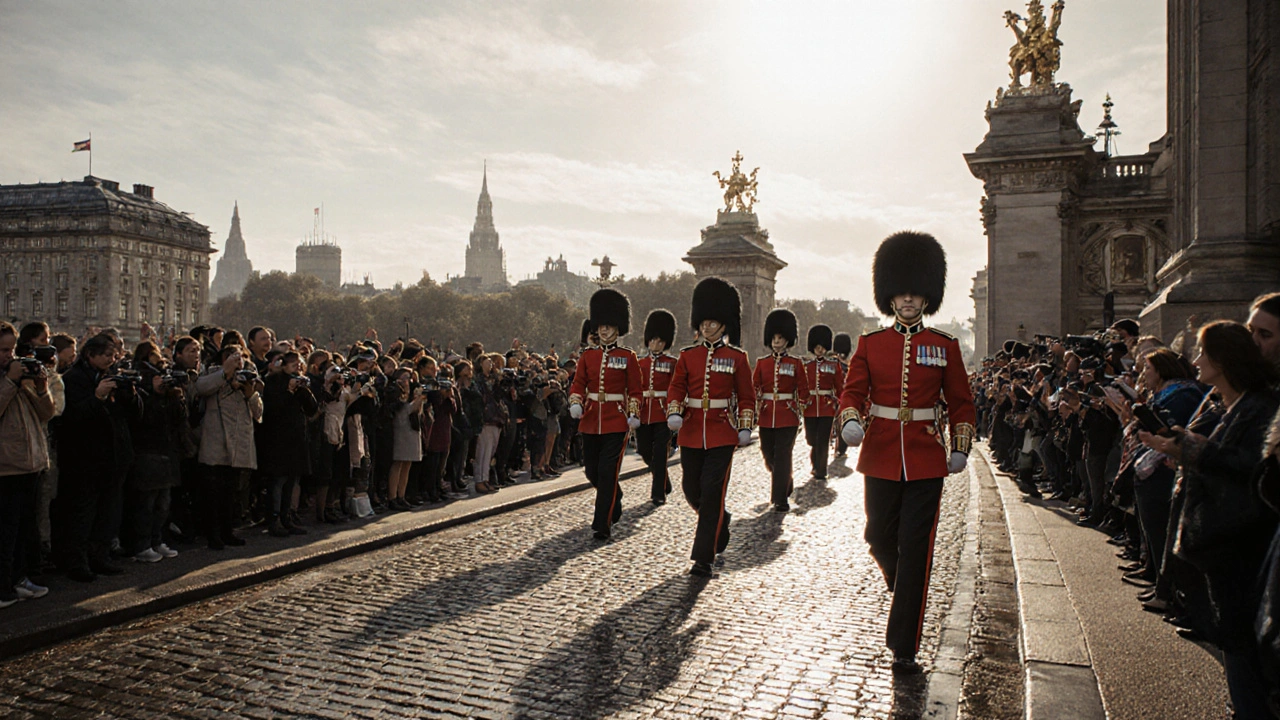Changing of the Guard in London: Ceremony, History, and Best Viewing Tips
When you think of London, one image often comes to mind: the Changing of the Guard, a daily ceremonial handover of duties by the British Army’s Foot Guards at royal palaces. Also known as Queen’s Guard**, it’s not just a show—it’s a living tradition that’s been running for over 300 years.
This ritual isn’t just about red coats and bearskin hats. It’s the result of strict military discipline, centuries-old protocols, and deep respect for the monarchy. The guards you see at Buckingham Palace are part of the Household Division, selected from elite infantry regiments. They don’t just stand still—they march in perfect unison, carry 10-pound rifles, and train for months to get the timing right. The ceremony at St. James’s Palace and Hyde Park follows similar rules, but Buckingham Palace is where most visitors gather. It’s the most accessible, the most dramatic, and the most photographed.
Don’t assume it’s just for tourists. Locals show up too—on weekend mornings, families bring picnics, students skip class, and retirees bring folding chairs. The ceremony happens every day in summer, and every other day in winter, but it’s canceled in rain or if the Queen is in residence. You can’t book tickets, but you can plan. Arrive 30 minutes early, stand near the palace gates (not the front railings), and look for the drummers leading the march. The new guard arrives from Wellington Barracks, marching to the sound of a military band. When they reach the palace, the old guard steps aside, the keys are handed over, and the new guard takes position. It lasts about 45 minutes, and if you watch closely, you’ll see the guards never break eye contact—not even when kids wave or dogs bark.
There’s more to it than the spectacle. The uniforms, the rifles, even the way they salute—every detail has meaning. The bearskin hats? Originally worn to make soldiers look taller and more intimidating. The red coats? Designed to hide bloodstains from battle. And the music? Each regiment has its own march, passed down for generations. It’s not just a performance—it’s a story told in movement, sound, and uniform.
What you’ll find in the posts below are real, practical tips from people who’ve been there. Where to stand for the best photos without getting shoved by crowds. Which days are quietest. How to combine the ceremony with a walk through St. James’s Park or a coffee near Green Park. You’ll learn how to avoid the tourist traps, spot the real guards (not the ones posing for selfies), and understand why this ritual still matters—not because it’s old, but because it’s alive.
